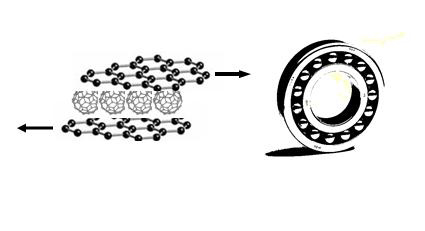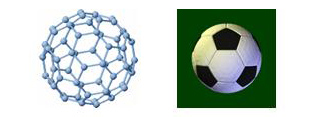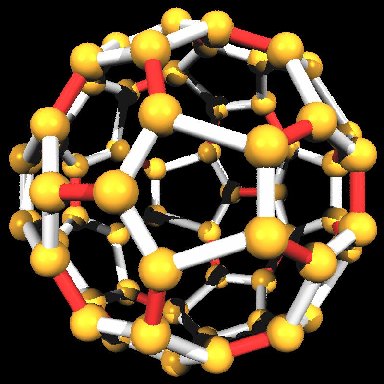3.1. The Environmental Impact of the Manufacturing of Seminconductors*
"This module was developed as part of a Rice University Class called "Nanotechnology: Content and Context"initially funded by the National Science Foundation under Grant No. EEC-0407237. It was conceived, researched, written and edited by students in the Fall 2005 version of the class, and reviewed by participating professors."
The semiconductor industry is one of the
fastest growing manufacturing sectors in not only the United States
but also in the world. According to the American Electronics
Association, the domestic sales of electronic components have
skyrocketed, jumping from $127 billion to $306 billion over the
course of the 1980’s. In the first three quarters of the 2003
fiscal year alone, the export of technology goods from the United
States increased by $19 billion [1].
The word “semiconductor” technically refers
to any member of a class of solid, crystalline materials that is
characterized by an electrical conductivity better than that of
insulators (e.g., plastic) but less than that of good conductors
(e.g., copper) [2]. Semiconductors are particularly useful
as a base material in the manufacturing of computer chips, and the
term semiconductor has actually come to be synonymous with the
computer chips, themselves. However, semiconductors are not only used in
computers. Computers only make up 44% of entire industry
consumption (see Figure 3.1). Semiconductors are also used for military, automotive,
industrial, communications, and other consumer purposes.
Semiconductors seem to be anywhere and
everywhere throughout our everyday lives, yet it is surprising how
little most people know about how they actually work or about the
potentially devastating effects their manufacturing can have on the
environment and human health.
Why is nanotechnology important to the semiconductor industry?
Much of the study of nanotechnology has been centered on the manufacturing of semiconductors. Though there are a number of
highly anticipated applications for nanotechnology in other fields,
notably in medicine and in biotechnology, the most tangible results
thus far can be argued to have been achieved in the semiconductor
industry.
For example, Intel recently unveiled its
first products based on a generation of 90-nanometer process
technology, and its researches and engineers have built and tested
prototype transistors all the way down to the 22-nanometer range.
Currently, Intel scientists and engineers are working on
identifying new materials such as carbon nanotubes and nanowires to
replace current transistors, and in particular they hope to develop
a “tri-gate” transistor approach that would enable chip designers
to build transistors below the 22-nanometer range [4].
With the advent of nanotechnology, these
transistors are becoming even faster and more powerful, and in
accordance with the law of accelerating returns, the industry has
been producing smaller transistors at lower costs with each and
every passing year. As these semiconductors become smaller and
smaller, they are quickly and surely pushing towards the limits of
the nano-realm.
These innovations, however, do not come
without their fair share of challenges. Physical issues that are
not problematic at the micron scale arise at the nano-scale due to
the emergence of quantum effects, and in much the same way that
optical microscopy cannot be utilized at the nano-scale, the
semiconductor industry is fast approaching a similar diffraction
limit. Optical lithography, for instance, a process that uses the
properties of light to etch transistors onto wafers of silicon,
will soon reach its limit.
At its most basic level, nanotechnology
involves pushing individual atoms together one by one. Since
approximately 1.7 billion transistors are required for a single
chip, this is obviously not a realistic method for mass production.
Unless an alternative method for production or a solution to this
problem is found, the development and manufacturing of transistors
are expected to hit a proverbial brick wall by the year 2015. This
is the reason that research in nanotechnology is so important for
the world and future of semiconductors.
How are semiconductors manufactured?
Today’s semiconductors are usually composed
of silicon, and they are manufactured in a procedure that combines
the familiar with the bizarre; some steps that are involved in the
process are as everyday as developing a roll of photographic film
while others seem as if they would be better suited to take place
on a spaceship.
These semiconductors appear to the naked eye
as being small and flat, but they are actually three-dimensional
“sandwiches” that are ten to twenty layers thick. It can take more
than two dozen steps and up to two full months to produce a single
one of these silicon sandwiches. Some of the basic and more
essential steps involved in the manufacturing process of silicon
chips are briefly detailed below.
First, silicon crystals are melted in a vat
and purified to 99.9999% purity. The molten silicon is drawn into
long, heavy, cylindrical ingots, which are then cut into thin
slices called wafersabout the thickness of a business card.
One side of each wafer must be polished
absolutely smooth. This process is called chemical-mechanical
polishing, and it involves bathing the wafers in special abrasive
chemicals. After chemical-mechanical polishing, imperfections
cannot be detected on the wafers even with the aid of a laboratory
microscope.
After a wafer is polished, layers of material
must be stacked on top of the silicon wafer base. Insulating layers
are laid down in alternation with conducting layers in a process
called deposition. This is often achieved by spraying the chemicals
directly onto the surface of the wafer through chemical vapor
deposition. Following deposition, the wafer is coated with another
layer of chemicals called a photoresist that is sensitive to
light.
Next, a machine called a stepper (Figure 3.3) is calibrated to project
an extremely fine and focused image through a special type of
reticle film in a manner similar to that of a simple slide
projector. The light that is transmitted through the reticle is
projected onto the photoresist layer, which reacts to the light and
begins to harden. All of the parts of the wafer exposed to this
light harden into a tough crust while the parts in shadow remain
soft. This particular step is known by the name of
photoelectrochemical etching because it achieves an etching effect,
resulting in a chip.
Hundreds of copies of the chip are etched onto the wafer until the entire
surface has been exposed. Once this process is complete, the entire
wafer is submerged into an etching bath, which washes away any
parts of the photoresist that remain unexposed along with the
insulating chemicals underneath. The hardened areas of the
photoresist, however, remain and protect the layers of material
underneath them. This process of depositing chemicals, coating with
a photoresist, exposure to light over a film mask, and etching and
washing away is repeated more than a dozen times. The result is an
elaborate, three-dimensional construction of interlocking silicon
wires.
This product is then coated with another
insulating layer and is plated with a thin layer of metal, usually
either aluminum or copper. Yet another photoresist is laid down on
top of this metal plating, and after the wafer is exposed in a
stepper, the process repeats with another layer of metal. After
this step has been repeated several more times, a final wash step
is performed, and a finished semiconductor product rolls off the
assembly line, at last.
A typical semiconductor fabrication facility, or “fab” in
industry jargon, looks like a normal two- or three-story office
building from the outside, and most of the interior space is
devoted to one or more “clean rooms,” in which the semiconductors
are actually made. A clean room is designed with a fanatical
attention to detail aimed towards keeping the room immaculate and
dust-free (Figure 3.4).
Most if not all surfaces inside these clean
rooms are composed of stainless steel, and these surfaces are
sloped whenever possible or perforated by grating to avoid giving
dust a place to settle. The air is filtered through both the
ceiling and the floor to remove particles that are down to 1/100
the width of a human hair. Lighting is characteristically bright
and slightly yellowish to prevent mildew from forming behind
equipment or in recessed corners, and even the workers in a clean
room must be absolutely spotless.
Workers in these rooms must be covered from
head to toe in “bunny suits” that completely seal the body in a
bulky suit, helmet, battery pack, gloves, and boots. Once sealed in
these suits, the workers often look more like space explorers in a
science fiction movie than computer chip employees, but in order to
even enter the stainless steel locker room to suit up to begin
with, they must first pass through a series of air lock doors,
stand under a number of “air showers” that actually blow dust off
of clothing, and walk across a sticky floor matting that removes
grime from the bottom of shoes.
Semiconductor-manufacturing companies often
portray their fabrication facilities as being clean,
environmentally friendly, and conspicuously free of the black,
billowing smokestacks that have come to be associated with the
plants and factories of other major industries. These facilities
produce no visible pollution and certainly do not appear to pose
any health or environmental risks.
In truth, the term “clean room,” itself is
more than just a bit of an understatement. Industry executives
often boast that their clean rooms are from 1,000 times to 10,000
times cleaner and more sanitary than any hospital operating
room.
What are the health risks involved in the
semiconductor industry?
The use of sterile techniques and the
fastidious attention devoted to cleanliness in the semiconductor
industry may perpetuate the illusion that the manufacturing of
semiconductors is a safe and sterile process. However, as a rapidly
growing body of evidence continues to suggest, hardly anything
could be further from the truth (Figure 3.5). The question of worker safety and
chemical contamination at chip-making plants has received an
increasing amount of attention over the course of the past
decade.
The devices being built at semiconductor fabrication
facilities are super-sensitive to environmental contaminants.
Because each chip takes dozens of trained personnel several weeks
to complete, an enormous amount of time and effort is expended to
produce a single wafer. The industry may pride itself on its
perfectly immaculate laboratories and its bunny-suited workers, but
it should be noted that the bunny suits are not designed to protect
their wearers from hazardous materials but rather to protect the
actual semiconductor products from coming into contact with dirt,
hair, flakes of skin, and other contaminants that can be shed from
human bodies. They protect the silicon wafers from the people, not
the people from the chemicals.
Lee Neal, the head of safety, health, and
environmental affairs for the Semiconductor Industry Association,
has been quoted as saying, “This is an environment that is cleaner
than an operating room at a hospital.” However, this boast is
currently being challenged by industry workers, government
scientists, and occupational-health experts across the country and
worldwide.
Industrial hygiene has always been an issue
in the semiconductor industry. Many of the chemicals involved in
the manufacturing process of semiconductors are known human
carcinogens or pose some other serious health risk if not contained
properly. Table 3.1 lists ten of the hazardous chemicals
most commonly used in manufacturing semiconductors along with their
known effects on human health.
Table 3.1. Chemicals of concern in the semiconductor industry [5].| Chemical name | Role in manufacturing process | Health problems linked to exposure |
| Acetone | Chemical-mechanical polishing of silicon wafers | Nose, throat, lung, and eye irritation, damage to the skin,
confusion, unconsciousness, possible coma |
| Arsenic | Increases conductivity of semiconductor material | Nausea, delirium, vomiting, dyspepsia, diarrhea, decrease in
erythrocyte and leukocyte production, abnormal heart rhythm, blood
vessel damage, extensive tissue damage to nerves, stomach,
intestine, and skin, known human carcinogen for lung cancer |
| Arsine | Chemical vapor deposition | Headache, malaise, weakness, vertigo, dyspnea, nausea,
abdominal and back pain, jaundice, peripheral neuropathy,
anemia |
| Benzene | Photoelectrochemical etching | Damage to bone marrow, anemia, excessive bleeding, immune
system effects, increased chance of infection, reproductive
effects, known human carcinogen for leukemia |
| Cadmium | Creates “holes” in silicon lattice to create effect of
positive charge | Damage to lungs, renal dysfunction, immediate hepatic
injury, bone defects, hypertension, reproductive toxicity,
teratogenicity, known human carcinogen for lung and prostate
cancer |
| Hydrochloric acid | Photoelectrochemical etching | Highly corrosive, severe eye and skin burns, conjunctivitis,
dermatitis, respiratory irritation |
| Lead | Electroplated soldering | Damage to renal, reproductive, and immune systems,
spontaneous abortion, premature birth, low birth weight, learning
deficits in children, anemia, memory effects, dementia, decreased
reaction time, decreased mental ability |
| Methyl chloroform | Washing | Headache, central nervous system depression, poor
equilibrium, eye, nose, throat, and skin irritation, cardiac
arrhythmia |
| Toluene | Chemical vapor deposition | Weakness, confusion, memory loss, nausea, permanent damage
to brain, speech, vision, and hearing problems, loss of muscle
control, poor balance, neurological problems and retardation of
growth in children, suspected human carcinogen for lung and liver
cancer |
| Trichloroethylene | Washing | Irritation of skin, eyes, and respiratory tract, dizziness,
drowsiness, speech and hearing impairment, kidney disease, blood
disorders, stroke, diabetes, suspected human carcinogen for renal
cancer |
Several semiconductor manufacturers including
National Semiconductor and IBM have been cited in the past for
holes in their safety procedures and have been ordered to tighten
their handling of carcinogenic and toxic materials.
In 1996, 117 former employees of IBM and the
families of 11 workers who had died of cancer filed suit against
the chemical manufacturers Eastman Kodak Company, Union Carbide
Corporation, J. T. Baker, and KTI Chemicals, claiming that they had
suffered adverse health effects as a result of exposure to
hazardous chemicals on the job in the semiconductor industry [5]. The lawsuit was filed in New York, which prevented the employees
from suing IBM directly. A separate group of former IBM workers who
had developed cancer filed suit against the company in California,
alleging that they had been exposed to unhealthy doses of
carcinogenic chemicals over the past three decades. Witnesses who
testified in depositions in the New York state court in Westchester
County described how monitors that were supposed to warn workers of
toxic leaks often did not function because of corrosion from acids
and water. They also alleged that supervisors sometimes shut down
monitors to maintain production rates. When they lodged complaints
with senior officials in the company, they claim to have been told
not to “make waves” [6]. Meanwhile, 70 female workers in
Scotland sued National Semiconductor Corporation, another
U.S.-based company, claiming that they, too, were exposed to
carcinogens on the job.
These lawsuits and the resulting publicity
prompted a groundbreaking study by the Health and Safety Executive,
which commissioned a committee to investigate these
allegations [7]. The committee found that there were indeed unusually high levels of breast and other kinds of cancer among workers at National
Semiconductor’s fabrication facility in Greenock, Scotland. The
committee concluded that the company had failed to ensure that the
local exhaust ventilation systems adequately controlled the
potential exposure of employees to hydrofluoric acid and sulphuric
acid fumes and to arsenic dust. These findings proved to be
extremely embarrassing for the company and for the industry.
According to an official statement released by Ira Leighton, acting
regional administrator of the New England branch of the U.S.
Environmental Protection Agency,
“National Semiconductor is a big business
that uses a large amount of harmful chemicals and other materials. Our hazardous waste regulations were created to properly monitor dangerous chemicals and prevent spills. In order for it to work, it is important businesses to comply with all of the regulations. When
companies fail to do this they are potentially putting people – their employees and neighbors – at risk [8]. ”
Moreover, a study of fifteen semiconductor manufacturers
published in the December 1995 issue of the American Journal of
Independent Medicine showed that women working in the so-called
clean rooms of the semiconductor fabs suffered from a 14%
miscarriage rate.
The main problem in prosecution is that the industry does not have a single overarching and definitive process for manufacturing,
and it is difficult to pinpoint one particular compound as causing
a certain health problem because some plants use as many as 300
chemicals. Also, many of the manufacturing processes take place in
closed systems, so exposure to harmful substances is often
difficult to detect unless monitored on a daily basis.
Executives and spokespeople for the
semiconductor industry maintain that any chip workers’ cancers and
other medical problems are more likely due to factors unrelated to
the job, such as family history, drinking, smoking, or eating
habits. They also say that over the years, as awareness of chemical
hazards has grown, they have made efforts to phase out toxic
chemicals and to lower exposure to others. They insist that they
use state-of-the-art process equipment and chemical transfer
systems that limit or prevent physical exposure to chemicals and
point out that the substances used in the semiconductor industry
are used in other industries without a major health or safety
problem.
What environmental risks are involved?
In theory, attention to cleanliness is in the
manufacturer’s best interest not only from a health perspective but
also from an economic. Many chemicals used in the production
process are not expensive in and of themselves; however, the cost
of maintaining these materials in an ultra-clean state can be quite
high. This encourages the close monitoring of usage, the
minimization of consumption, and the development of recycling and
reprocessing techniques. Also, the rising costs of chemical
disposal are prompting companies to conduct research into
alternatives that use more environmentally friendly methods and
materials. Individual companies and worldwide trade associations
were active in reducing the use and emission of greenhouse gases
during the 1990’s, and the industry as a whole has substantially
reduced emissions over the last twenty years.
Nonetheless, there has been a history of
environmental problems linked to the industry in Silicon Valley and
other technology centers. To begin with, a tremendous amount of raw
materials is invested in the manufacturing of semiconductors every
year.
Moreover, a typical facility producing
semiconductors on six-inch wafers reportedly uses not only 240,000
kilowatt hours of electricity but also over 2 million gallons of
water every day [9]. Newer facilities that produce eight-inch and twelve-inch wafers
consume even more, with some estimates going as high as five
million gallons of water daily. While recycling and reusing of
water does occur, extensive chemical treatment is required for
remediation, and in dry or desert areas such as Albuquerque, New
Mexico, home to plants for Motorola, Philips Semiconductor, Allied
Signal and Signetics, Intel, and other high-tech firms, the high
consumption of water necessary for the manufacturing of
semiconductors can pose an especially significant drain on an
already scarce natural resource [10]. The existence of economic mainstays including the mining industry
and the established presences of Sandia National Laboratories and
the Los Alamos National Laboratory make New Mexico an attractive
location for high-tech tenants. However, the opening of fabrication
facilities in the state leaves its farmers and ranchers in constant
competition with the corporations for rights to water consumption.
On average, the manufacturing of just 1/8-inch of a silicon wafer
requires about 3,787 gallons of wastewater, not to mention 27
pounds of chemicals and 29 cubic feet of hazardous
gases [11].










